This post may contain affiliate links.
Growing bananas and banana plants is pretty easy if you have a warm-tropical environment, This post covers how to grow bananas , some important tips and tricks to produce your best banana crop, and some vital facts about growing bananas.

Growing Bananas
Bananas grow in bunches on a banana plant. A banana plant is not a tree, although banana plant can certainly be so tall that they appear to be trees. Bananas are of the genus Musa and are related to the gingers.

In cool climates people often grow banana plants as ornamentals, this is possible if you keep them warm in a greenhouse or indoors. Some wrap them in fleece to protect them in winter, but here in the tropics, we have no difficulty at all in growing bananas, year-round.
Bananas are Great Permaculture Plants

- You can create the classic permaculture banana circle with a group of banana plants.
- There are many varieties of banana and come can be cooked and eaten green as a carbohydrate staple.
- Banana plants naturally grow in dense clumps, but you can also plant them in lines as windbreaks or sunshades
- Bananas give you endless leaves for chop and drop.
- Banana trunks, cut and placed on your soil as mulch, feed and water your soil, improving and protecting it.
- Banana leaves, flowers, and fruit, have culinary uses.
- Many herbivores will eat banana leaves.
- Fibrous parts of the banana plant can be used in weaving
What Conditions Do Banana Plants Need to Grow?
- Bananas enjoy good rich soil. They grow to huge sizes, fast, this requires plenty of nutrients.
- Green leafy growth requires high nitrogen feeds and mulch.
- Potassium is also important for banana growth as this nutrient in involved in water and carbohydrate production and movement in the plant. The banana fruit is a good potassium source for humans, of course.
- Soil should be moist but not waterlogged, they enjoy tropical humid warmth year-round
- They enjoy being in clumps, this is how they naturally grow, in succession.
- They like sunshine. Bananas stop growing below 14C and like to be in the high 20s to 30C (around 80F)
- You will need plenty of space and room for your banana clump to expand, don’t plant bananas right up against a fence, nor in a tiny raised bed.
- Banana plants get damaged in high wind. Their leaves are shredded by cyclones and plants do blow over. Their natural clumping habit protects those plants on the inside of the clump.
Can Bananas Grow in a Suburban Garden?

Yes, if you have warm enough conditions and a good amount of space you can grow bananas in the ground in a suburban garden or backyard.
The two photos above are of bananas growing in my garden, or back yard, when we lived in suburbia.
Don’t plant your bananas this close to the fence, that was a new gardener mistake I made. Not only are most of these fences treated with toxic chemicals (CCA – Copper Chrome, Arsenic), the banana was very likely to destroy this fence soon.
The banana bunches would also lean over the fence and could easily have been stolen or vandalised. Don’t do it!
I should have read my own post on gardening tips for new gardeners!
If your soil is poor, our old garden was just solid clay, you can build better soil by adding compost, organic material, mulches, and fertilisers.
How Do Banana Plants Grow?
Banana plants grow from corms under the ground. A type of rhizome. The corm grows sending out new banana plants over time.
You will always have a succession of banana plants, each sprouting from the base.
When a new sprout shoots up from the base, this is called a sucker or a pup. The pups can be removed and planted elsewhere, or left to grow alongside the mother and grandmother shoot.
Growing banana plants from these suckers or pups is the best way to propagate bananas, ask a friend for a pup, or buy one from a nursery.
If you’re removing a sucker or pup, wait until it’s about a foot long and separate it from the mother by cutting downwards with a spade, between the two plants. You’ll need to get a chunk of the rhizome and roots too. Just pot the baby up, feed and water it well, and it should thrive.
Don’t water too heavily until the plant has big leaves, these are from where all that water evaporates, a new baby will have a lower water need until that point and there is a possibility of rot setting in where you cut the pup from the mother.
Bananas will produce a lot of suckers, you absolutely should remove some and just leave one at a time to grow up and replace the oldest plant, which you’re going to cut down after it fruits.
If you allow multiple plants to grow to maturity simultaneously, you may find that the plant is overstretched, your bananas may be smaller than they should be.
Are Banana Flowers Edible?

Yes, banana flowers are absolutely edible and quite delicious. they are commonly finely shredded and served in mixed leaf and herb salads.
This is really common in Vietnam, where we’ve eaten them often.
You can remove the flower after the fruit has set, in fact, some growers say this is important to do, and so enjoy the flower and the fruit.
Do You Need to Mulch Bananas?
Mulching is always a good idea to protect the soil and keep in moisture, but you’ll likely find that an established banana patch is self-mulching. The older leaves die, or you cut them off, forming a substantial amount of organic matter around the base of your plant.
This natural banana leaf mulch traps moisture and protects the soil from sun, wind, and water damage.
Banana Bags
If your bunches of bananas are hanging low to the ground it’s quite likely that animals will eat them. I’ve seen wallabies eat bananas and our chickens and geese are very fond of eating bananas.
Banana bags are a means of protecting bunches of bananas from pests, predators, birds, and fruit fly. You need to bag them early, when they are green. Banana bags are normally plastic and open ended, you have to tie them on.
I used to bag mine when we had just a solitary bunch each year, now, with around 50 banana plants, we just don’t bother, there are always plenty of bananas for everyone.
What to Do With All Those Bananas?
You are very likely to have more bananas than you could possibly eat, and they all ripen, on one bunch, almost simultaneously, or over a few days.
You can freeze bananas, just peel them and freeze them separately, lined up on a tray, then bag them to store in the freezer.
These are great for smoothies or banana bread.
We feed bananas to our chickens, and some we use to make fertiliser, either by making a banana tea, or by composting or adding them to the worm farm.
If anyone ever wants bananas we have plenty, just ask!
Bananas really are superabundant and easy to grow if you have a tropical or warm subtropical climate and are an amazing source of food volume.
Types of Banana

Is a Banana a Fruit?
Yes, a banana is a fruit, it is the fruit of the banana plant which is a tropical herb and not a tree. However, many commercial varieties of bananas no longer contain seeds, this trait has been bred out. A fruit is technically defined as a mature, ripened ovary and its contents, normally seeds.
The ovary is the ovule bearing, female part of a plant’s reproductive system.
Bananas also meet most requirements of being a berry. A berry is made up of seeds and pulp, the pericarp. The exocarp of the pericarp (outer skin) is the skin of a grape or the skin of a banana.
There are endless divisions and subdivisions in the world of fruit and vegetables, and most people disagree as to definitions. A berry is a type of fruit (source) so even if it is a berry, a banana is still a fruit.
The absence of seeds in a banana muddies the waters of definition.
Are Bananas a Palm?
No, bananas are not a palm. Bananas are plants, not trees. Palms are trees. Bananas are perennial tropical herbs of the genus Musa. Order Zingiberales, that’s the same order as the gingers and heliconias that are so prolific in the tropics.
So yes, ginger, turmeric and bananas are related.
A banana plant does not have a true trunk, what appears to be the trunk is a collection of growing leaves absolutely packed with fibrous water carrying vessels.
Bananas in Colder Climates

Two highly ornamental banana plants which are easy to overwinter in colder climes (all 50 states of the US even!) are the red Abyssinian banana, and Musa Basjoo, the hardy banana.
If you’d like to learn more about keeping banana plants alive in winter in the US, take a look at this post on banana care.
Banana Roundup
Bananas are one of the very best food plants you can grow in the tropics giving you, the gardener, mountains of food, huge volumes of fruit, and masses of organic material with which to improve your soil. They’re also easy to grow if you know what’s in this post. Good luck growing bananas. One of the big advantages of growing your own food, is in knowing it’s fresh, has more nutrients, and no pesticides or herbicides have touched it.
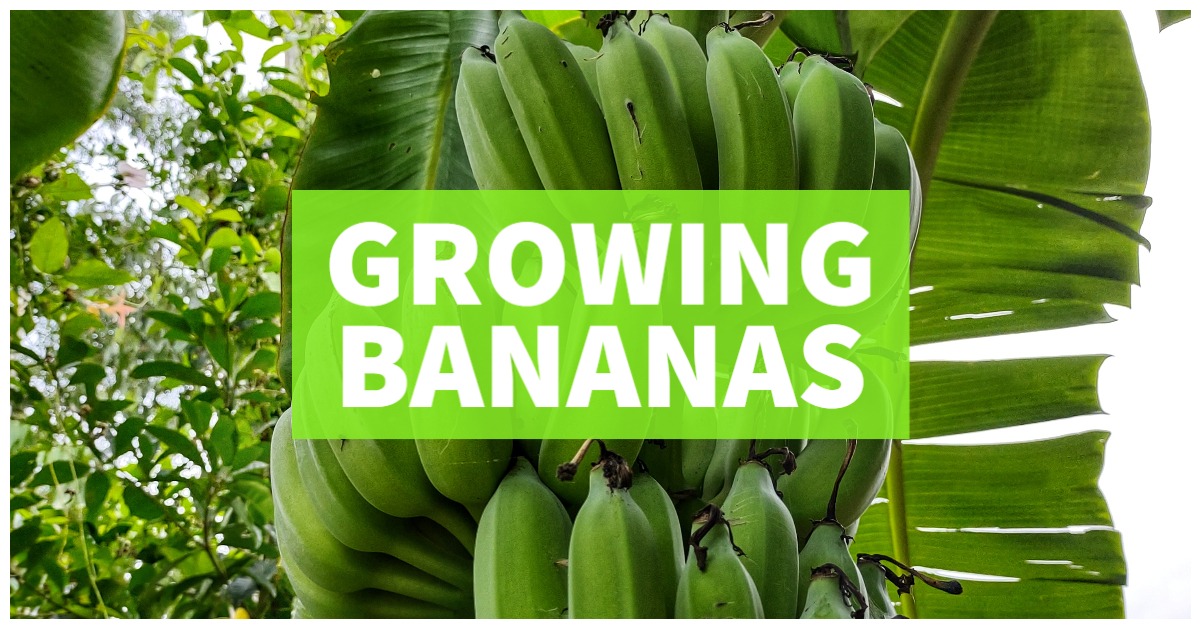
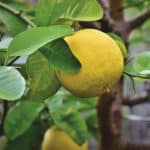

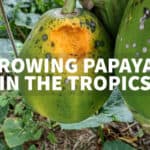
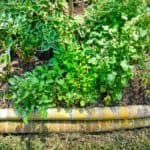
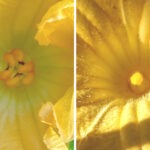
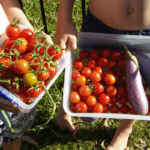

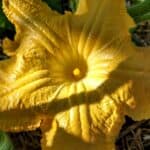
I have been reading posts regarding this topic and this post is one of the most interesting and informative one I have read. Thank you for this!